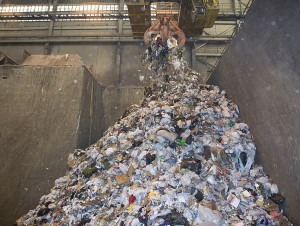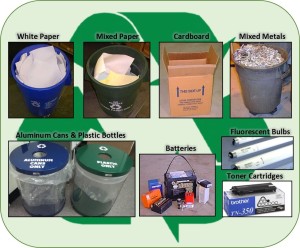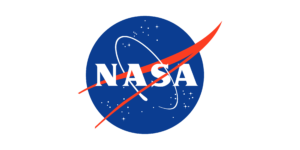Let’s Talk Trash: Solid Waste Disposal at NASA Langley
NASA LaRC’s mission results in the generation of significant volumes of municipal solid
waste. The major items are: paper (white and mixed); wood; metals (copper, aluminum,
steel, and specialty metal); cardboard and paperboard products; plastics; grounds
maintenance waste; food wastes (cafeteria); glass, specialized materials (composites,
plastics, ceramics, and alumina); and remediation and facility maintenance wastes
(debris, rags, absorbants).
Scrap metals such as aluminum, copper and steel, and excess materials having
salvage value are given to a contractor who brokers the material for LaRC. Scrap
materials of little or no value such as building materials, tree and shrub trimmings, and
broken concrete are transported to a licensed landfill for disposal. Excess equipment is
given to the General Services Administration (GSA) to be recycled to private vendors for
resale.
Approximately 526 metric tons (580 tons) per year of LaRC solid waste is burned in the
Refuse-Fired Steam Generating Facility (RFSGF) located on Wythe Creek Road. The
waste is general facility trash that is not recyclable. The plant has the capacity to burn
181 metric tons (200 tons) per day of refuse from the City of Hampton, NASA LaRC,
LAFB, Fort Monroe, Bethel Manor Housing, and the Veterans Administration Hospital. In the event that the RFSGF closes down operations, LaRC may send its solid waste to a local landfill.
The LaRC Environmental Management Office (EMO) tests paint removal and spill cleanup wastes to ensure that the materials are properly disposed. Wastes that are non-hazardous, non-regulated waste are consolidated into dumpsters and sent for disposal to a local landfill. Remediation and spill debris material that contain RCRA listed hazardous waste or exhibit hazardous characteristics are sent to a permitted hazardous waste disposal facility.

In the Refuse-Fired Steam Generating Facility, garbage from Peninsula cities, NASA Langley, Langley Air Force Base and Northrop Grumman Shipyard is burned. The 2,200-2,300 degree flame it generates fires a generator that provides as much as 70 percent of the steam used in the center. Credit: NASA/Sean Smith
Solid Waste Recycling at NASA Langley
NASA LaRC also has a very active recycling program. The overall objective of LaRC’s recycling program is to develop an efficient and cost effective recycling program that: meets or exceeds the recycling goals established by regulations or Executive Orders, maximizes collection of recyclables and proceeds from their sale, preserves and conserves the environment and its resources. LaRC actively recycles items such as paper, cardboard, toner, aluminum cans, plastic bottles, oil filters, used oil, metal, fluorescent bulbs, batteries, organics (yard waste), and antifreeze. These recycling activities result in returned income to LaRC to be used for pollution prevention and recycling initiatives.


